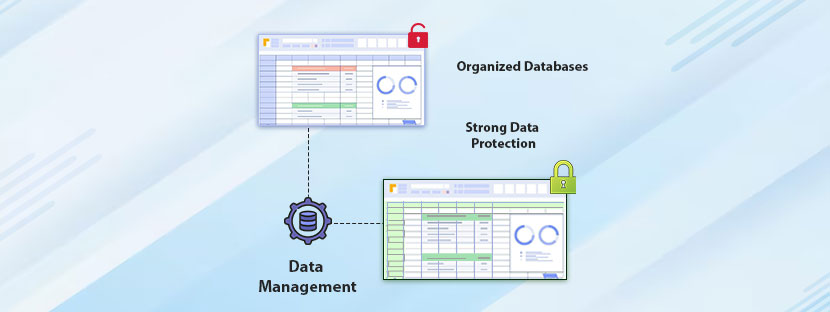In This Article
Planning to assess more data for better business insights but don’t know where to start? Well, first of all, you need to improve data management practices of your organization to begin this journey. Thereafter, you can invest in a quality data acquisition process to have more data for the assessment.
In the competitive business landscape, data plays the most vital role in gaining success for any organization. Companies are now investing more in data acquisition and management to gain competitive insights. With the help of the right data, businesses can make better decisions and frame strategies for development.
But how businesses would manage to acquire huge quantities of data? Well, for that, they can outsource copy-paste data entry services to gather data in huge volumes. But companies must know what to do with the data afterward. Thus, depending upon the quality of data management and assessment, businesses would fetch success.
This blog aims to show how businesses can improve data management through eight robust techniques. With these data management techniques, businesses can efficiently manage the huge volume without mankind any errors.
Let’s begin this with the basis of understanding what is data management and its crucial aspects.
A. Why Managing Data is so Important?
Data management, answer simply, is a practice of collecting, organizing, and storing datasets in protected databases. Therefore, later, it helps in the analysis procedure so businesses can get better insights. Data management is essential for those organizations that work with huge quantities of data.
Many companies nowadays use enhance data management software to manage their databases, which is a nice way to ensure proper management. However, human insights are unavoidable when it comes to managing data efficiently. Businesses can improve data management practices with the help of automation along with manual inspection.
But to answer the question of why data management is crucial, you need to understand three things first.
But to answer the question of why data management is crucial, you need to understand three things first.
Properly managed data ensures reliability in the process and helps businesses make the right decisions. The excellent practice of data management will make the data reliable and valid. Hence, with up-to-date and reliable data, companies can make quick changes as per market demands.
The main aim of data management is to provide robust security to the database. The process of data management helps businesses keep track of the database. Besides that, the practice is data management is also wide and effective. It includes a backup process to retrieve the data whenever you need it and it would provide security from data loss and theft.
B. Essential Aspects on How to Improve Database with Data Management Techniques
To improve data management practices, first, you need to learn crucial elements of data management. Data management is a mixed process as it includes multiple aspects of handling data. Businesses must maintain all data management practices critically to get the most benefits. These following elements are part of a robust data management procedure.
1. Data Preparation
For a detailed analysis, you need proper data in accurate formats otherwise you will be unable to derive true pictures. Hence, preparing the data in an accurate format is the initial stage of data management. The process of data preparation includes cleaning up the datasets and converting data into right the format.
2. Data Catalog
The data catalog is a crucial part of enhance data management which is more like indexing the datasets. Data catalogs help to locate the data in the database and also provide a summary of changes for the file. The process of data cataloging helps in managing the datasets with the help of metadata.
3. Data Pipelines
Data pipelines are simply helping the process of transferring files from one format to another. Not only changing the format, pipelines help to send data from one system to another smoothly. The data pipeline is the best method of ingesting huge volumes of data from the raw source to the database.
4. Data Architecture
Businesses can improve data management practices by creating a robust data architecture. Creating a data architecture will help businesses to manage the data flow seamlessly. Data architecture is a formal approach to creating and managing the data flow in the operation.
5. Data Modeling
An application or tool plays a critical role in managing the flow of data. The process of data modeling helps to develop an application to manage the data. With this application, businesses enter data into the database and take out data from it.
C. Best 8 Database Management Techniques & Organization
Earlier businesses used to manage the data process with the help of manual data entry processes. But not the situation has improved a little bit as automation along with manual processes helps to manage data better. However, besides the essential aspect of data management, certain techniques every organization follows as a process of data management to perform this task better. These are;
1.Having Databases Organized
The need for data has rapidly increased over the years but businesses need only organized data to initiate further processes. With unorganized data, it is very difficult to improve data management practices. However, the process of data organization starts with data classification. Data classification means allocating data into different groups as per its attributes.
Besides classification, accurately labeling the datasets is also very important to manage the data. However, it takes patience and time to create labels for each dataset so businesses often delegate these tasks to outsource. With the help of copy-paste data entry services, businesses can accurately label each dataset and ensure classification.
Data visualization is another aspect of organizing the data as it will represent data neatly on the database. Representing raw data in the database visually also means creating graphs, charts, and diagrams. Visual representation always helps to identify insights from the raw data. Businesses can make informed decisions and gain more insights with the help of graphs, charts, and other diagrams.
2. Excellent Data Security
In today’s digital era, ensuring the security of data is a crucial part of the enhance data management. To secure the data, businesses apply data encryption techniques to protect it from external sources. Businesses can improve data management by ensuring robust security through encryption.
Encryption can protect the data from external breaches and prevent its manipulation. Businesses can take strict measures to protect the encryption key to secure information. With the incorporation of strong security keys in data management, businesses can prevent hackers from entering the system.
Businesses handle mostly customers’ data as it includes customers’ personal information and other crucial data. Therefore, having a strong security measure in the data management process is essential important. Ensuring robust data security in document management system helps businesses to gain the trust of customers. Committing to data security measures will provide businesses with a trustworthy and secure database.
3. Ensuring Data Consistency
Data consistency or uniformity means you can find the same value of the data across multiple databases. Businesses can improve data management practices if they maintain data consistency thoroughly. Businesses that outsource copy-paste services have better control over the consistency of data. The process usually goes through a data validation technique to check value consistency.
Data consistency also indicates that the database does not contain any duplicate data. Duplicate data always create manipulated results thus they need to be avoided while initiating the data consistency procedure. Also, the process of data validation includes identifying duplicate values and eliminating them from the database.
Without data duplication, businesses can make better decisions as the process will become free from errors and confusion. The data organization process of duplication ensures that each dataset represents unique values and has no errors. Besides that, consistent data also makes the database reliable and increases the level of data accuracy. Also, consistent data represents unique datasets that have no redundancies.
4. Preparing Data Backup
Safety of the data is paramount for every business procedure thus regularly backing it up is the ideal solution here. Data backup is a cruel process in which businesses can improve data management procedures. Backing up the data helps in handling the database from potential damages. Even if the data gets deleted accidentally from the database it will get stored in the backup.
Hence, data backup takes part in the process of data recovery and quickly fixes any issues. In the digital era, saving all data in the backup database is very crucial. Hardware failure, software issues, any external issues, or anything can happen at any time in the database. But businesses can easily handle all these situations if they save the data correctly in the backup database. Backing up crucial data is an essential aspect of data management procedure.
To maintain the adequacy level of backup in the system, it is always best to have an automated solution for data reporting and management. Businesses can develop automated solutions with the help of data itself. There is no need to keep reminding to check for the backup process as the system is self-sufficient to back up automatically. What you need to do is just to set a schedule for the data backup and that’s enough. Here, the system will automatically send files to the backup database.
5. Integrating Data Sources
Integrating different data sources plays a major role in the data management procedure. To improve data management practices, businesses often combine different sources of data into a single platform. This procedure also helps in managing the data in a consistent format across different channels.
Integrating multiple sources into a single format is quite challenging that’s why businesses often rely on outsourcing for this process. This process includes extracting data from different sources first and then placing the data in a single database. Having all data in a single database helps in working productively and efficiently. Also, you can detect errors easily when you have all the data in a single database.
Validating the data is a crucial part of the data management process and it ensures completeness of the data. By integrating data sources, all datasets will become valid and appropriate. Hence, businesses can derive efficient and quality results with the assessment of integrated databases.
6. Improving Data Accuracy
Maintaining the accuracy level intact is a part of the data management procedure. The procedure of copy-pasting techniques helps companies in managing the data accuracy level. To improve data management, businesses often deploy efficient copy-paste data entry. These data management techniques of data organization efficiently maintain the accuracy level of data while copying the data from one source to another.
Generally, errors happen in the system due to a few errors in the process. These errors include typos, number mistakes, spelling mistakes, etc. Don’t forget, that these issues can make huge mistakes in deriving accurate pictures. Hence, deploying the right method to make the dataset accurate is extremely necessary here. With the help of the right copy-pasting services, businesses can improve the level of data accuracy.
7. Initiating Data Cleansing
Data cleansing is one of the crucial steps of data management, which ensures the quality of data intact. Data validation is the first step of initiating the data cleaning process where the process eliminates data inconsistency and maintain data integrity. After finding consistency, the next step is standardizing the data according to the accurate format. Standardizing the data ensures the quality of the data.
To improve data management, the data cleansing process eliminates duplicate data from the database. Besides duplicate datasets, the process eliminates outdated datasets as well. Therefore, businesses can experience the benefit of clean, efficient, and updated databases with the cleansing process. Businesses also can make informed decisions with the help of a clean database.
8. Better Data Assessment
Have you understood the importance of having an organized database? If yes, then you must know what is the aim of a robust data management process. Businesses organize data for the purpose of assessing the data better. A good data management procedure immensely helps to assess the datasets.
However, alternatively, businesses can improve data management with the help of outsourcing data entry services. The copy-paste data entry outsourcing agencies will take care of the data management needs with the right process.











